The Strand’s Foggy Past in Conan Doyle’s Work
Posted in 1800-1899, 19th Century, Literature, people, Places, Stories, Strandlines, Strands, streets and roads and tagged with Air Quality, city life, Conan Doyle, Fog, pollution, Sherlock Holmes, Strand Magazine, Victorian London
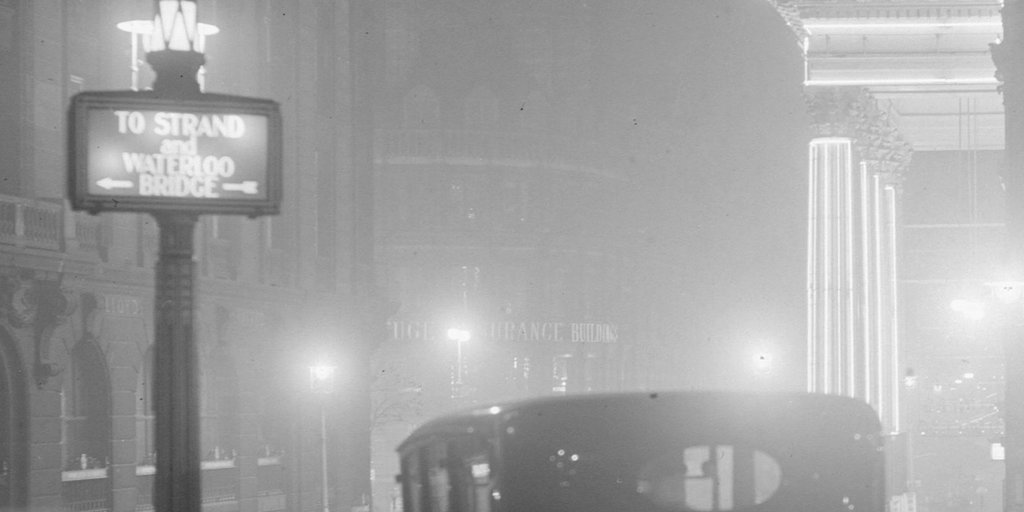
In the late 19th century, the Strand Magazine propelled Arthur Conan Doyle’s writings to new heights. This meteoric rise brought wider public attention to some of the issues that plagued London in the 1890s.
In the Strand Magazine pieces, complex connections between writing by Doyle and the concerns of the Smoke Abatement Society are apparent. The latter was a group dedicated to raising concern with London’s terrible air. In ‘The Sign of Four” by Doyle, we have a clue of the writer’s interest in the environment. He wrote:
“It was a September evening and not yet seven o’clock, but the day had been a dreary one, and a dense drizzly fog lay low upon the great city. Mud- coloured clouds drooped sadly over the muddy streets. Down the Strand the lamps were but misty splotches of diffused light which threw a feeble circular glimmer upon the slimy pavement.”
A brief introduction to the Strand Magazine
[I want to preface this by saying I encourage everyone to read Sarah Mir’s article on Helen Nontando Jabavu, which deals with a remarkable writer’s work on the New Strand Magazine.]
From the mid to late 19th century, there was a multitude of illustrated monthly magazines available to the keen reader. For example, Golden Hours (1864), London Society (1862), the Savoy (1865), which all ran into the late 1880s. The Strand Magazine emerged in 1891. W.T. Stead and George Newnes were writers and editors who had worked on the Review of Reviews in 1889, however, creative differences soon led Newnes to embark on his new project, the Strand Magazine.
It emerged in a clearly swamped magazine market, yet historian Jonathan Cranfield argues it managed to stand out. According to Cranfield, “The Strand‘s principal claims to distinction were the relatively low price of sixpence and a comparatively lavish number of illustrations, diagrams and photographs.” As a result of these competitive features, the first issue of the Strand sold over 300,000 copies. The magazine ran from from January 1891 to March 1950.
The Strand Magazine and Arthur Conan Doyle
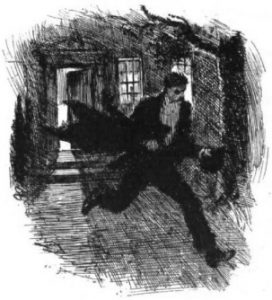
Illustration by Walter S. Stacey for ‘The Voice of Science’ – the first Conan Doyle story in the Strand Magazine (1891).
Many people attribute the publishing of Doyle’s work in the Strand Magazine as the main source of success for the publication. This is not entirely accurate as we can see that the Strand was already selling hundreds of thousands of issues in early 1891. Though, after ‘Scandal in Bohemia’, Cranfield argues that the magazine and Doyle became inseparable in the minds of reviewers.
On the 16th of July, the Sheffield Independent wrote:
“the stories [in the July Strand] are all sensational and worth reading, especially the detective story entitled ‘A Scandal in Bohemia’. This is not at all the common type of detective story, with which we are getting very familiar . . . Altogether the Adventures of Sherlock Holmes are likely to prove interesting.”
The arrival of Holmes’ literary universe made the Strand Magazine a rousing success. Doyle’s success in the Strand and the “serialisation of The White Company in the Cornhill” (both in 1891) allowed him to leave his career as an ophthalmologist. This period was a turning point in his literary career.
1890s London – the real-life backdrop to Sherlock and Watson
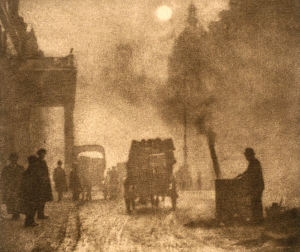
The Haymarket Winter (1913) – By James A. Sinclair. This photo illustrates the ‘fog problem’ London suffered from for decades.
In 1880, medical journalist Ernest Hart and social reformer (and co-founder of the National Trust) Octavia Hill joined forces to form the Fog and Smoke Committee. Cranfield writes that, “according to other supporters of the movement, the dangers that fog and smoke posed for health seriously threatened Britain’s position in the world, not just the inhabitants of its capital city.” These concerns offer a hint at some of the ideological factors rallying against unclear air: many people were concerned that the air would affect Britain as the centre of empire.
Holmes and the emergence of the Strand Magazine were therefore situated in a deeply colonial context. Fears of the fog were not simply domestic. Lord Reginal Brabazon (1841-1929) warned in 1887 that the fog was weakening the constitution of Londoners and rendering them unfit for military service. These fears were heightened during British defeats in the second Boer War (1899-1902).
On November 3oth 1881, the Smoke Abatement Exhibition opened in South Kensington. Its message was aided by two severe fogs in January and February of 1882. Over time the Fog and Smoke Committee was renamed to the National Smoke Abatement Society (1889 0nwards.) In 1891, the Public Health (London) Act of 1891 was passed to attempt to reduce factory produced smoke.
Fog in Doyle’s work
In many stories, fog is a key element in Sherlock’s detective work. Holmes viewed the fog as an ally to criminals:
“The London criminal is certainly a dull fellow. . . . Look out of this window, Watson. See how the figures loom up, are dimly seen, and then blend once more into the cloud-bank. The thief or the murderer could roam London on such a day as the tiger does the jungle, unseen until he pounces, and then evident only to his victim.“
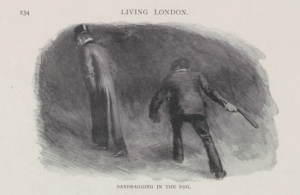
Sandbagging in the fog from G.R. Sims’s book ‘Living London’ – an example of the use of the of the fog by criminals.
Alongside the ominous characterisation of the fog, The Sign of Four lines from above are fascinating. Trying to imagine the bustling Strand as “slimy” and lit by “a feeble circular glimmer” is quasi-impossible for anyone who has visited the wide modern thoroughfare lined with blazing theatre signs and full of traffic.
The Sign of Four provides a looking glass into the past. The fog was as inescapable in real life as it was in literature. So much so, that the fog was also integral to the plot of Doyle’s The Adventure of the Bruce-Partington Plans (1908). As Christine Corton writes, “The ‘Partington fog’ has an imprisoning effect on Holmes and Watson […] They spend the first three days of the of deliberately employed in indoor activities, much to Holmes’s frustration.” The end of the story, which focused on a murder, reveals that the murderers used a thick fog as cover to lower the victim’s body on to a train.
The fog, then, is not only a health concern in Doyle’s writing, but becomes a moral and ethical problem too.
Concluding thoughts
The interrelations between a magazine, a renowned author, and public health activism leads us to conclude that fog and smoke were daily threats to Londoners and Strand-goers of the past. Doyle’s work integrated this fear, and was widely read. I always appreciate literary works that can be used as primary sources to discern important elements of the past. Clearly fog and smoke was hanging heavy on the minds of our prior Londoners.

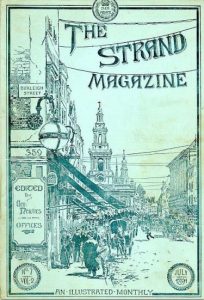
Such a unique article, so well articulated and so interesting! Loved it 🙂
Thanks for reading, Sarah!
[…] To find out more about the nineteenth-century Strand, check out Théophraste Fady’s article: The Strand’s Foggy Past in Conan Doyle’s Work. […]